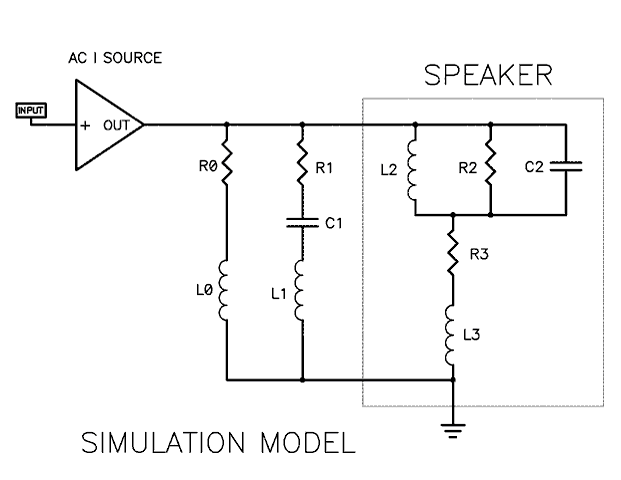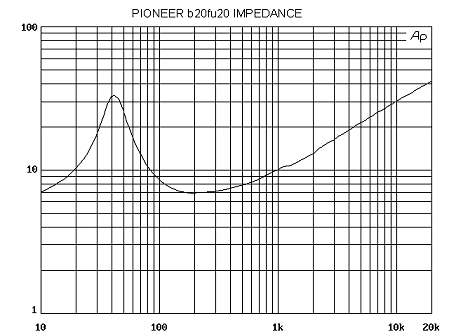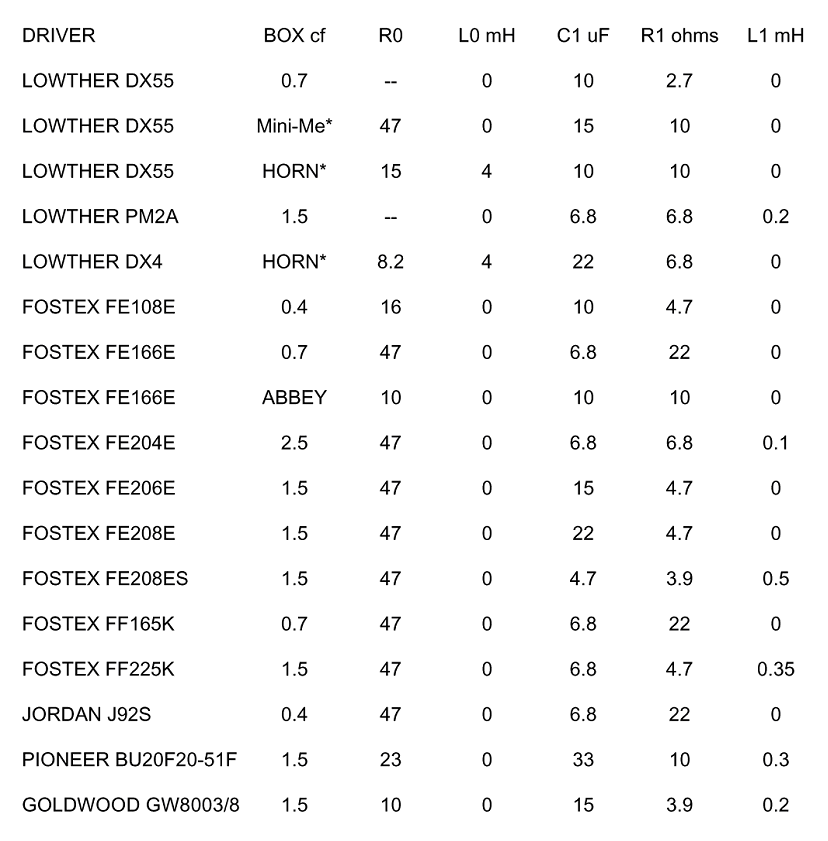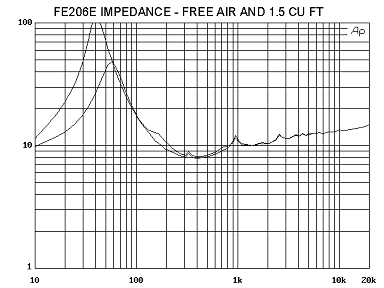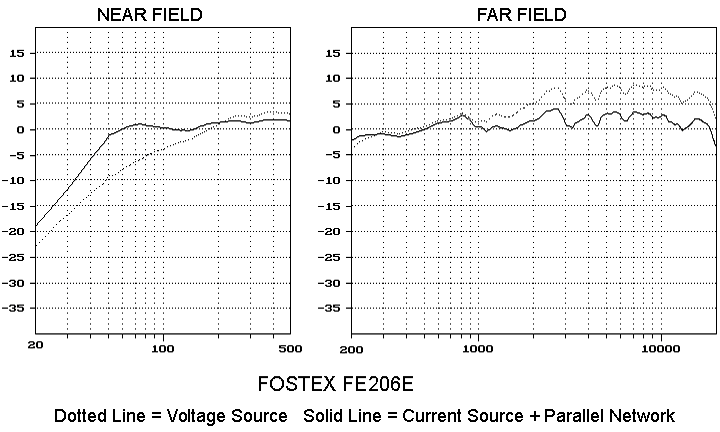|
Nelson Pass, the First Watt Project, and the BassZilla Model T by Dick Olsher This month we focus on Nelson Pass and the First Watt Project. As Nelson explains below (see excerpts from the F1 Manual), “First Watt is a kitchen table operation – the projects that are not appropriate for my day job.” The F1 is Nelson’s first “kitchen table” design in the First Watt series - a two channel transconductance power amplifier, which is a fancy name for an active current source. The F1, unlike a voltage-controlled amplifier, attempts to sink a constant current into the loudpseaker - irrespective of variations in the load impedance. Reprinted below, with permission, are excerpts from Nelson Pass’ scrumptious article dealing with the application of current source amplifiers, and specifically the model F1, to power full-range, high-efficiency speakers. It should become obvious that a current-source amplifier opens new possibilities in the context of full-range drivers, taking the loudspeaper-amplifier interface in a new and exciting direction. Of course, it becomes critical that the speaker’s crossover and EQ networks be designed to accomodate the amplifier. Therefore, I am currently in the process of developing a version of the BassZilla loudspeaker, dubbed the Model T, to take full advantage of the First Watt F1’s capabilities. The Model T designation is appropriate since this will be the most affordable BassZilla to date, using the Fostex FE-206E full range, Fountek JP-3.0R super tweeter, and the Sonicraft SC-1250 12-inch woofer in a closed box alignment. I expect to finalize the Model T design later this year. Stay tuned for further details Current Source Amplifiers and Sensitive / Full-Range Drivers by Nelson Pass Introduction Conventional wisdom holds that a pure voltage source amplifier is ideal for audio applications, and generally designers of loudspeakers work to that assumption. This belief has particularly been dominant since the development of high power solid-state amplifiers that began in the 1960’s. A small minority of audiophiles thinks otherwise, and these are often people using low wattage tube amplifiers with unusual looking speakers. Well, of course entertainment is full of fringe elements. A couple of years ago, Kent English and I were playing around with various ribbon tweeters, noting how the ribbons themselves seemed perfectly happy being driven by a current source and without their usual matching transformer. We built an audio current source that delivered 1 amp of AC current per input volt to a maximum of 10 amps. This kind of amplifier is known as a power transconductance amplifier. Such circuits are fairly common in small chips which don’t generate the high current necessary to drive a loudspeaker. Our amplifier had a high output impedance and thus no damping factor, but we found that the ribbon in the tweeter didn't seem to need much damping factor, measuring and sounding a bit better without the matching transformer. We decided that a current source was likely delivering more accurate force/acceleration to the ribbon than a voltage source and after playing with it for a couple of days, we put it away and went on to other projects. About this same time, Kent and I began playing with full-range drivers, those loudspeakers which deliver bass, midrange and treble from one single cone. In a number of ways, they don’t measure as well as multiple specialized drivers particularly at the bottom and the top, but there is something aesthetically appealing about the simplicity of the idea and on many occasions, they manage to sound very good especially driven by tube amplifiers. Most interesting are the full-range high-efficiency drivers that deliver the goods with only a watt or so. It’s a big design challenge to produce a good sounding full-range acoustic transducer with 100dB/watt efficiency. When it is properly achieved, you get a wealth of detail, exceptional dynamic range and a sense of musical “liveness” that you don’t often hear elsewhere. Tube amplifiers seem to bring out the best in such drivers. They have more bottom end, a warmer, mellower mid and upper mid-range, and often more top octave. By comparison, the “best” solid-state state amplifiers make them sound more like transistor radios – less bottom and a, occasionally strident upper midrange. If you are a solid-state kind of guy (like me) you start wondering how that could be, and if you are a tube aficionado, you smirk and say, “I told you so.” The solid-state guy probably starts fixing the response with a parametric equalizer, and the tube guy enjoys his music with a nice glass of wine. Critical damping -- that resistive combination of electrical source impedance, suspension friction and acoustic load -- occurs when you apply a step pulse to the voice coil and the cone’s motion doesn’t overshoot. Under-damping results in bass notes that hang around a little longer than the amplifier intended. Over-damping has good transient bass control but also suffers a significant loss of bottom end response. Generally, we want something in-between, something closer to critical damping. Whether we over-damp or under-damp seems to be a matter of taste. The need for electrical damping is different for each type of loudspeaker and acoustic environment. High-efficiency full-range drivers are more easily damped than other types due to their powerful efficient motors and light cones. Looking at their bass response curves, we conclude that they are easily over-damped, resulting in excessive loss of bottom end. This partially explains the preference for tube amps with such loudspeakers. Anyway, this assortment of observations arrived at a confluence when I hooked up a Son of Zen amplifier (Audio Electronics 1997 #2) to a pair of Fostex 208Es in sealed enclosures. The Son of Zen operates without feedback and has an output impedance of about 16 ohms. This nets a damping factor of 0.5, miniscule compared to the 100 to 1000 you can achieve with regular solid-state amplifiers. With the low damping factor, the Fostex became a totally different speaker. It suddenly had bottom end response and a better top end. It still had the same annoying upper midrange that had Dick Olsher (www.blackdahlia.com) devise his passive equalization network. The low damping factor didn’t cure the upper midrange faults but it seemed to work improvements everywhere else. A year later, Kent has acquired about 20 different full-range mid to high-efficiency drivers for us to play with (that’s part of his job description) and we’ve spent as much time exploring them as we reasonably could, trying different things to coax the best sound out of them with a current-source amplifier and various passive parallel networks. What is a High-Efficiency / Full Range Loudspeaker? To arrive at high efficiency and wide bandwidth, we fundamentally need two things – a great motor and a great radiating surface. A great motor means getting the most force/acceleration for the least amount of electricity. It means a big magnet with lots of magnetic density in a precisely machined gap where a very light voice coil sits perfectly aligned. This voice coil is wound in a cylindrical assembly that maximizes the current exposed to the magnetic field and generates the highest amount of force (acceleration) for a given amount of electrical current. In other words, we need an expensive motor. \ The other half of the equation is the cone assembly attached to the voice coil. In contrast to the fine motor engineering, here we start seeing more of the black art involved in designing such a drive unit. The radiating surface for such a loudspeaker must be very light to maximize the acceleration from the voice coil. At the same time, the cone needs to be stiff and inflexible so that this acceleration can be accurately transmitted to the entire radiating surface at once. When this fails at high frequencies (which it will), the cone needs to decouple the force gracefully to a smaller and smaller surface so that it effectively shrinks at the highest frequencies. In practice, it’s a lot of art coupled to even more trial and error. Thomas Edison could have made a fantastic version of such a speaker and for his time, I believe he did. Besides obviously requiring low power and only one driver per channel, the advantages to a full-range efficient loudspeaker are found in three areas. First, the speaker requires no crossover network to apportion frequency bands to different drivers and thus does not suffer the phase shifts that come with such filters. Second, the sound radiates from one point source - diffraction effects between multiple drivers are removed. Third, the electrical and mechanical qualities required by such drivers give rise to subjectively good dynamic range and detail, assuming we deal with an ideal example of a full-range efficient driver. Naturally, the reality can fall well short of the promise. Real drivers tend to be too limited to satisfactorily deliver both the treble and bass octaves of audio. The decoupling of high frequencies on the cone is often not smooth, and with that come response peaks and dips in the upper midrange often followed by a high frequency roll-off. On the bottom end, over-damping of the very light cone contributes to a roll-off starting an octave or more above resonance so that many examples of such drivers fall short below 100Hz. Driven from a voltage source in a closed box, the response of such light-weight cones can be down by as much as 15dB at resonance. Some of these drivers are better than others, most are delicate and some of them are very expensive. Power Transconductance Amplifiers This is a fancy name for a power current source. An input voltage causes the amplifier to deliver a proportional output current. Of course this same sort of thing would occur with an ordinary amplifier driving a pure resistance but a loudspeaker circuit is not purely resistive. It possesses numerous reactive elements, some due to inductance and capacitance in the electrical circuit, some from the reaction to motion of the voice coil in a complex mechanical system. Fed by a voltage amplifier, the current through the driver’s voice coil is not directly or instantly proportional to the input to the amplifier. Ordinarily, loudspeakers are designed around this assumption but the “piston model” of loudspeaker design assumes that the acoustic output mirrors the acceleration of the voice coil/cone assembly over a specific range and this is reflected by the current through the voice coil. The most precise way to develop that specific current is with a current-source amplifier. Such an amplifier ignores the impedances in series with the circuit, the resistance and inductance of the wire and voice coil and the back electromotive force (EMF) produced by the cone motion. As I said, most speakers are designed around voltage sources but there are few instances where a current source can be used to advantage. One of the best ones is the category of full-range high-efficiency drivers. Why is that? First, such drivers are able to take advantage of acoustic and suspension resistance to achieve some or all of the damping that they need to prevent excessive overhang because their moving mass is very light. With their efficient motors, even a high source impedance is often enough to give critical damping. Second, their impedance curve tends to reflect their needs – more current both at low frequency resonance and in the treble, two areas where frequency response has fallen off with increased speaker impedance. If you want, the current through the voice coil can be made constant regardless of the variations in the acoustic environment. The voice coil force is invariant whether the cone is loaded into a horn, sealed box, bass reflex or whatever else you care to mount it in. Third, they are very easy to adjust in the upper midrange and high end where you typically run into peaking problems. Most of these drivers are too hot in the upper midrange and quite a few of them fail to make it to 20KHz. With a simple parallel network, you can arrange for a midrange dip followed by an increase at the top, evening out the loudspeaker response. With the higher quality drivers, you more than not simply want an equalized “shelf” where everything above a specific frequency is evenly attenuated. The adjustments for damping at the low end and the mid/high peaking are easily accomplished using R, RC or RLC (resistor/inductor/capacitor) networks wired in parallel with the output of the amp. You occasionally see this sort of equalization with full-range high-efficiency drivers using voltage-source amplifiers, but there the elements are paralleled and then placed in series with the driver. With a current source, the equivalent circuit becomes the elements placed in series and then paralleled with the driver. Of course with a current source, there's the added benefit that the resistive element of the speaker cable and the connection points can be made to largely disappear. To obtain the best results, the loading network is placed close to the driver instead of the amplifier. The following pages will show what we found with a variety of full-range efficient loudspeaker transducers when we drove them with an active current source and experimented with parallel networks to shape the response to our liking. Most of the examples we will examine do not require true current source amplifiers, only amplifiers of quite high output impedances. Most of these cases will be happy with an output impedance of approximately 47 ohms or so and prefer 47 ohms loaded in parallel with the output of a current source. That being the case, you can build a Thevenin Equivalent of such a current source by placing a large resistor (here later referred to as R0) in series with the output of a high wattage voltage source amplifier and get similar results. I’m not saying it will equal a spiffy First Watt F1 (being Class A and no feedback and all), and your resistor will run hot. On the other hand, you probably already have such a voltage-source amplifier and some of these speakers are quite cheap, allowing you a taste of these forbidden pleasures without high expense. I want to emphasize that this does not serve as any sort of comprehensive guide to designing systems around this approach. You can build up the examples and they will probably measure about the same. But remember that we are mostly restricting ourselves to the sealed box case for simplicity’s sake. In the real world and most of time, these drivers are used in an enclosure that also utilizes the back wave of the driver. Additionally, the best measured curve is often not the best sounding one so be prepared to try various values to get satisfactory sound. Amplifier / Loudspeaker / EQ network Model The following schematic will be referenced through the rest of the article: This diagram shows a current-source amplifier, the simplified model of the loudspeaker's impedance and the generalized network that we can parallel with the speaker to enhance its performance. The speaker model consists of L2/R2/C2 that model the fundamental resonance, and R3/L3 give us its DC resistance and high frequency inductance. A good example of this is the simulation of the Pioneer b20fu20-51 driver. The values L2 = .05 H, R2 = 27 ohms, C2 = 300 uF, R3 = 7 ohms and L3 = .1 mH give a reasonable facsimile of the measured free-air impedance curve shown below.
Unless otherwise noted in this discussion, we will be addressing the driver mounted in a sealed box of a given volume, as it is the easiest design to consider. Horns and rear-loaded acoustic systems are more complicated to simulate and measure and the test results are more difficult to duplicate and interpret. One advantage to a sealed box for fullrange drivers is that the excursion becomes limited below resonance, which can reduce distortion particularly at higher levels. Driven by a voltage source, we usually see a response loss anywhere from -6 to -15dB at low-frequency resonance and a treble that increases or declines (or both) depending mostly on the cone construction and voice coil inductance. Driven by a current source, we note that the bottom end is bumped up at resonance and the top end is increased when compared to the performance of the voltage source. Let's assume that we want to achieve optimal frequency response for a given system. This is not necessarily the best-sounding system possible but causes less subjective arguments. We can trim the damping "Q" of the low frequency roll-off knee by trying different values for R0 (L0 = 0 in this case) until it flattens out to our taste. Most of the drivers we worked with were happy with values from about 22 ohms to about 47 ohms. It is surprising that so little damping gave such dramatic results but as previously pointed out, this category of loudspeaker responds well to small amounts of damping. Usually we also want to adjust the upper midrange and high end. Often these drivers will exhibit an upper-mid peak followed by a decline before the upper-most treble is reached. We can compensate for this by our selection of R1, C1 and L1, which can be used either to create a shelf or a dip to flatten out the response. With these models in mind, we measured all the sample speakers of interest, developing networks to optimally flatten out their response with a current source, and comparing this with the same speaker driven by a voltage source. We used a Vidsonics “virtual crossover” substitution box to play with the parallel loading and took both near-field (from an inch or so) and far-field (from 1 meter) response measurements using Mlssa. Again, the results here are not necessarily the best-sounding ones achievable and I am not attempting to address this subject as such, given the wide range of source material, listening environments and subjective tastes. Typically, these exact network figures are not the ones listeners will subjectively prefer. Usually this is because listeners tend to prefer a higher value for R1 than is shown on the table. If you decide to use one of these networks, consider the possibility that R1 is the minimum value and use a switch or high-power (5 watt) potentiometer to variably increase the value to as much as twice R1. Less often you might consider a different value for L1 to trim the treble. I repeat: Consider this as an experimental guide and a good starting point. Be prepared to change the values to suit your needs and remember that these figures were obtained in stuffed sealed enclosures in a large room placed well away from the wall. Your results will certainly vary. Also remember my comments reflect off-hand reactions. Please do not treat them as reviews. The following table shows the values that resulted in improved frequency response curves with current sources for different speakers in different sized boxes:
* Mini-Me is the Lowther Mini-Medallion rear loaded horn enclosure. Horn is the KleinHorn, a 20 foot long 30 Hz rear loaded horn with a 30 sq ft mouth. Article to follow shortly. Now that you have an overview of the interface network, let's look at the individual drivers in more detail. In the following pages, you will see a picture of the driver, an impedance curve, the near and far field response curves for the loudspeaker in the box described above. The dotted line is driven by a voltage source and the solid line is a current source with the parallel network in the above table. Note: Since only the Fostex FE206E full range is of interest in the context of the BassZilla Model T, only information specific to this driver will be presented here. The full article contains measurements for all of the drivers shown in the Table.
Comments: This is my other favorite Fostex driver. If you are looking for more or louder bass than you are getting with a FE166E and you’re willing to give up a little top end detail, then this is a good choice. It will take more power, has a 96dB sensitivity and if the specs don’t lie, it also has the greatest excursion of the bunch. They sell for $84 and if I were on a tight budget, I would consider this or the FE166E as best buys. Conclusion So here you have it – a re-examination of some things that have been known for a long time but were here tested with currently available drivers. It’s easy to dismiss the older ways. Somewhere in the 1960s, the speaker/amplifier interface took a left turn and headed off to high-power voltage source amplifiers and speakers designed to lean on them for performance. A small group of iconoclastic cranks has stayed interested in these fossils and in the end, we have to recognize full-range high-efficiency speakers as offering elegance, charm and a different sort of quality. Current sources and amplifiers with low damping offer interesting possibilities for improvement with these drivers but they require considerable work to get the enclosures, electrical networks and acoustic environment just right. Remember, you don’t have to own a current-source amplifier to put this information to work. Placing R0 in series with the output of a powerful voltage-source amplifier instead of in parallel with a current source will give similar results. If R0 is 47 ohms or higher, you are going to want a big amp, say 300 watts, but in any case, be certain to use a high power resistor of 50 watts or more. That said, it’s all just entertainment and I hope it inspires some of you to have some fun. Bon Appetite. Thanks to: Kent English, Desmond Harrington, Jon Ver Halen, Terry Cain, Ed at the Horn Shop, Chris and Matt Williams. Also thanks to Srajan Ebaen for last-minute editing. Copyright First Watt 2004 nelson@passlabs.com Links: www.firstwatt.com www.diyaudio.com www.passlabs.com www.cain-cain.com www.passdiy.com www.6moons.com www.lowther-america.com http://fullrangedriver.com www.fostex.com www.blackdahlia.com www.madisound.com www.quarter-wave.com/index.html www.partsexpress.com www.audioxpress.com
Excerpts from the First Watt F1 Power Amplifier Manual by Nelson Pass Who is First Watt? That would be me. I’ve been building audio for about 37 years because that’s what I do. While I have a nice business (Pass Labs) to tend in the daytime, sometimes I come home and can’t resist making something. First Watt is a kitchen table operation – the projects that are not appropriate for my day job. I like power amplifiers best, and I have the manufacturer's mentality - never build one when you could make a hundred. The inspiration for the company name and type of product comes from Dick Olsher (www.blackdahlia.com ). Dick is a long time hard-core audiophile reviewer whom I respect greatly, and he once said, “The first watt is the most important watt.” I have more recently heard it expressed as, “Who cares what an amplifier sounds like at 300 watts when it sounds like shit at 1 watt?” (At my kitchen table I can say any word I like as long as it’s OK with my wife). This philosophy dominates First Watt, as does the belief that simple elegant designs are the most worthy of my time and your money. There is a vast range of possibilities that fit that description - I am ferreting out some of the most interesting. If you have purchased one of these, Thank you and I hope you enjoy it. Now for Something Completely Different: The F1 is a two channel transconductance power amplifier, which is a fancy name for an active current source. A given input voltage results in a particular output current. Ordinary amplifiers are voltage amplifiers – an input voltage translates into an output voltage. This is not that kind of amplifier, and as of this writing, the F1 is the only such amplifier available for audio use. Being a current source, the F1 operates differently with a loudspeaker. A regular audio amplifier supplies an arbitrary output voltage, and the speaker draws current according to its complex characteristic. As such, the current through the loudspeaker is not exactly proportional to the voltage in either amplitude or time. A current source amplifier delivers a precise current to the voice coil of the loudspeaker driver, ignoring the series impedance elements in the circuit, including the wire, the inductance of the voice coil, the resistance of the voice coil versus temperature – all that stuff. This is potentially valuable in that the current passing through the magnetic field of the loudspeaker produces the force and acceleration on the voice coil and cone, and this translates directly into sound pressure. A current source is simply the most direct way of controlling the acceleration of the voice coil. Since most loudspeaker systems are designed around a voltage source, there is only a small subset of products that can take good advantage of this effect. In general, these are high-efficiency drivers (ones that produce more than 90 dB per watt). Of greatest interest is the performance offered to high-efficiency full-range drivers, where not only is the loudspeaker very efficient, but also covers (or tries to cover) the full audio spectrum through a single radiating surface. Often this translates to delicate single cone drivers such as the products from Lowther or Fostex, with big motor assemblies coupled to light fragile paper cones. These are the speakers that often don’t sound good with “high quality” solid-state amplifiers, most often because the two are mismatched in impedance and wattage. This is a very unusual amplifier that will not sound good with about 98% of the loudspeakers on the market. It requires careful attention to loudspeaker loading to get the best performance. The accompanying white paper “Current Source Amplifiers and Full-Range High-Efficiency Drivers” is required reading. This is a tinkerer’s amplifier, and experimental tool. If you just want to be a consumer, then buy something else, otherwise be prepared to patiently experiment with your system to get the best performance. It does not work well with ordinary passive crossover networks – the components and their locations tend to be reversed. It won’t break, but probably won’t sound good. If you have an electronic crossover, you’re in better shape, at least until I can finish a white paper describing passive crossovers for use with a current source. If being a current source amplifier isn’t different enough, the F1 is special in other ways. It uses no feedback to reduce distortion, flatten frequency response or create a low output impedance, and it ignores the voltages that appear across the speaker terminals. It also ignores the wire and the quality of your speaker connectors and so on. The F1 has only one gain stage, not 2 or 3 or 4 or 9. It operates in pure class A mode, which is the very best, but at a cost of constantly drawing 100 watts per channel and only giving 10 watts to the speaker. It is probably the quietest amplifier you can buy, with a typical figure of about 100 pico-watts noise. A pico-watt is a trillionth of a watt. As Class A amplifiers go, this one is referred to as a “balanced single-ended Class A” device, in which a single “differential pair” of transistors are biased by three constant current sources. Like I said, this is an unusual power amplifier. There will be 100 F1’s offered for sale to the public, and then I intend to make a different design. I mostly built this amplifier myself. I got some help from family and such, but if you find any fingerprints in it, they’re mine. Be certain to look at or even read the attached white paper "Current Source Amplifiers and Full-Range High-Efficiency Drivers" in considering how to use this amplifier. It is designed for a particular type of loudspeaker, and may not sound good with others. There is no potential for damage to the amplifier and you are not likely to break the speaker, so go ahead and try any speaker you like - just don't be surprised if it doesn't suit you.
|
